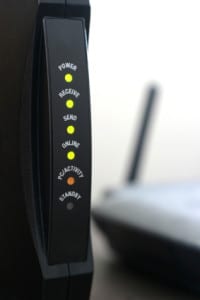If you want to import beef, eggs or chicken into the U.S., you need to get your cargo past inspectors from the U.S. Department of Agriculture. Not so hardware and software imported into the U.S. and sold to domestic corporations. But a spate of stories about products shipping with malicious software raises the question: is it time for random audits to expose compromised supply chains? Concerns about ‘certified, pre-pwned’ hardware and software are nothing new. In fact, they’ve permeated the board rooms of technology and defense firms, as well as the halls of power in Washington, D.C. for years. The U.S. Congress conducted a high profile investigation of Chinese networking equipment maker ZTE in 2012 with the sole purpose of exploring links between the company and The People’s Liberation Army, and (unfounded) allegations that products sold by the companies were pre-loaded with spyware. Of course, now we know that such […]
router
Report: Hell is Unpatched Systems
One of the ‘subplots’ of the Internet of Things revolution concerns embedded devices. Specifically: the tendency of embedded devices to be either loosely managed or – in some cases – unmanageable. The future holds the promise of more, not fewer of these. That’s the gist of a piece I wrote for InfoWorld, and that you can read here. In short: we’re already seeing the beginning of a shift on the threat landscape. While attacks against traditional endpoints (like Windows desktops, laptops and servers) are still the norm, there are more stories each day about cyber criminal groups and malicious actors who are compromising non-standard endpoints like home wifi routers. In March, for example, the security consultancy Team Cymru identified a botnet consisting of some 300,000 compromised home routers and other in-home devices. The virus called “TheMoon” was also identified spreading between vulnerable home routers and other embedded devices. The […]
Linux IoT Worm Still Alive And Mining Virtual Coins
A few months ago we wrote about a new Internet worm notable because it spread between devices running the Linux operating systems, and because it had the ability to infect a range of non-PC devices including set top boxes. Symantec was quick to suggest that the worm, Linux.Darlloz, was the first “Internet of Things” malware. Now, three months later, Symantec is updating the story: noting that Darlloz is still out there, and seems to have been put to use mining for virtual currencies. Writing on Symantec’s blog on Thursday, analyst Karou Hayashi said that researchers there discovered a new variant of Darlloz in January that included code changes and improvements from the version discovered at the end of 2013. Darlloz is versatile: it can run on devices using a variety of architectures, including the common Intel x86, but also hardware running the ARM, MIPS and PowerPC architectures. Those are more common […]
Update – Virtual Vandalism: Firm Warns Of Connected Home Security Holes
[This story was updated to include response from Belkin describing its response to the vulnerabilities identified by IOActive, including firmware updates. – PFR Feb 19, 2014] A researcher with the respected security firm IOActive says that he has found a number of serious security holes in home automation products from the firm Belkin that could allow remote attackers to use Belkin’s WeMo devices to virtually vandalize connected homes or as a stepping stone to other computers connected on a home network. In a statement released on Tuesday, IOActive researcher Mike Davis said that his research into Belkin’s WeMo technology found the “devices expose users to several potentially costly threats, from home fires with possible tragic consequences down to the simple waste of electricity.” IOActive provided information on Davis’s research to the US Computer Emergency Readiness Team (CERT), which issued an advisory on the WeMo issues on Tuesday. Belkin did not […]
Cisco Combines Linux, IOS For Internet of Things
Networking equipment giant Cisco Systems said that it is combining elements of the open source Linux operating system to its IOS firmware, launching a new architecture it calls “IOx” that will connect the billions of intelligent devices that will make up the Internet of Things. The new architecture was announced at Distributech in San Antonio – a trade show for the utility industry, on Wednesday. The company said IOx will make it easier for its customers to connect Internet of Things devices to back-end resources and the larger Internet. As it stands, the Internet of Things ecosystem is fragmented. Intelligent devices like the Nest Thermostat typically communicate back to proprietary cloud resources and might communicate with their surroundings using any one of a number of wireless protocols, including Bluetooth, Bluetooth Low Energy, Zigbee, Z-Wave, and so on. That balkanization has made it hard to create IoT solutions that span different families […]



